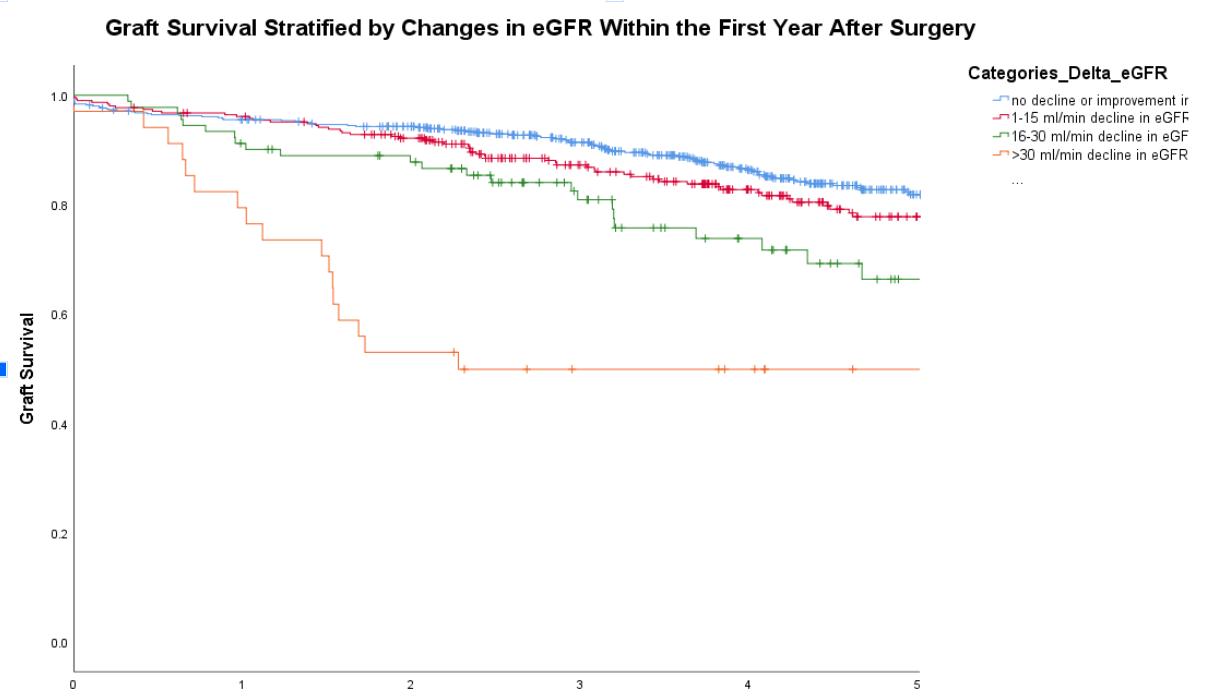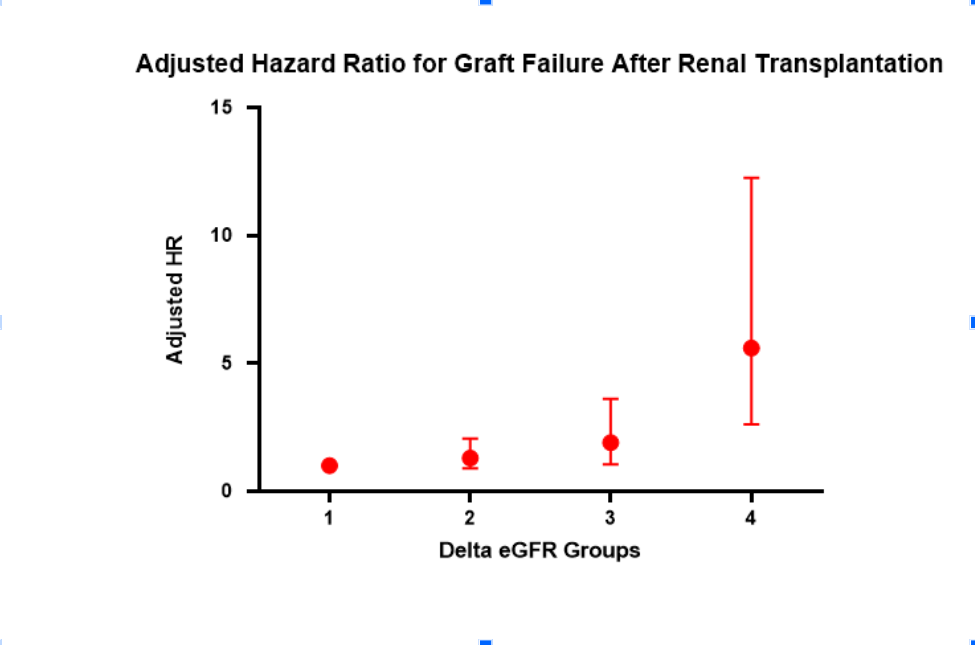Changes in Glomerular Filtration Rate (delta Egfr) within the First Year Predict Long-Term Outcomes of Renal Grafts
Starzl Transplant Institute, UPMC, Pittsburgh, PA
Meeting: 2021 American Transplant Congress
Abstract number: 1060
Keywords: Age factors, Glomerular filtration rate (GFR), Graft function, Kidney transplantation
Topic: Clinical Science » Kidney » Kidney Complications: Non-Immune Mediated Late Graft Failure
Session Information
Session Name: Kidney Complications: Non-Immune Mediated Late Graft Failure
Session Type: Poster Abstract
Session Date & Time: None. Available on demand.
Location: Virtual
*Purpose: The relationship between changes in eGFR (Delta eGFR) during the first year after renal transplantation (RT) and long-term graft survival are poorly understood. We hypothesized that Delta eGFR is an independent predictor of long-term graft outcomes.
*Methods: A retrospective analysis of all live or deceased donor RT at a single center between 2013-2019 was performed irrespective of primary diagnosis of renal failure and history of previous RT. Pediatric and recipients of multivisceral transplants were excluded. Delta eGFR (ml/min) was defined as the difference between eGFR at 12 months and eGFR at 3 months after surgery. The cohort was stratified into four groups: group I (Delta eGFR <0), group II (Delta eGFR=1-15), group III (Delta eGFR 16-30), and group IV (>30 mL/min). We performed correlation and regression analyses to assess if Delta eGFR was an independent predictor of graft failure.
*Results: A total of 998 patients were included. Median age was 58 years, 41% were females, 81% underwent first time RT. Hypertensive and diabetic nephropathy represented the most common indications for RT (15% and 18% respectively). 564 (56%) patients were in group I, 309 (31%), 91 (9.1%) and 34 (3.4%) in group II, III and IV respectively. At 60 months, the mean eGFR was 51 ml/min (+24), 45 (+22), 41 (+23) and 26 (+23) for Group I-IV respectively(P<0.001). 5-year graft survival was 82%, 77% 66% and 50% for Group I-IV respectively (p<0.001) (Figure 1). Cox regression analysis showed that after adjusting for recipient age, sex, ethnicity, PRA, time on dialysis and KDPI, Delta eGFR was an independent predictor for graft survival. Using Group I as reference, the adjusted HR were 1.3 (95% CI 0.89-2.06; P=0.15), 1.9 (95% CI 1.06-3.61; P=0.03), 5.6 (95%CI 2.62-12.25; P<0.001) respectively (Figure 2).
*Conclusions: The degree of decline in eGFR observed during the first year after renal transplantation is an independent predictor of long-term graft function.
To cite this abstract in AMA style:
Thompson AM, Zenati M, Hariharan S, Molinari M. Changes in Glomerular Filtration Rate (delta Egfr) within the First Year Predict Long-Term Outcomes of Renal Grafts [abstract]. Am J Transplant. 2021; 21 (suppl 3). https://atcmeetingabstracts.com/abstract/changes-in-glomerular-filtration-rate-delta-egfr-within-the-first-year-predict-long-term-outcomes-of-renal-grafts/. Accessed July 18, 2025.« Back to 2021 American Transplant Congress


